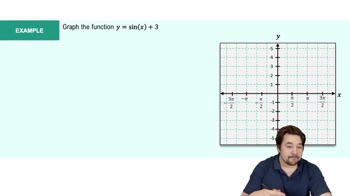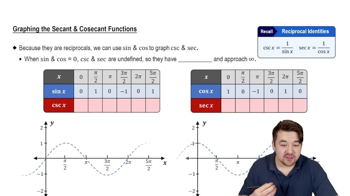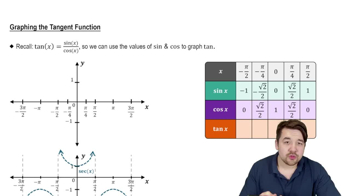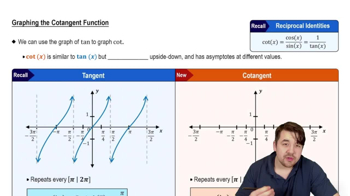Table of contents
- 0. Functions7h 52m
- Introduction to Functions16m
- Piecewise Functions10m
- Properties of Functions9m
- Common Functions1h 8m
- Transformations5m
- Combining Functions27m
- Exponent rules32m
- Exponential Functions28m
- Logarithmic Functions24m
- Properties of Logarithms34m
- Exponential & Logarithmic Equations35m
- Introduction to Trigonometric Functions38m
- Graphs of Trigonometric Functions44m
- Trigonometric Identities47m
- Inverse Trigonometric Functions48m
- 1. Limits and Continuity2h 2m
- 2. Intro to Derivatives1h 33m
- 3. Techniques of Differentiation3h 18m
- 4. Applications of Derivatives2h 38m
- 5. Graphical Applications of Derivatives6h 2m
- 6. Derivatives of Inverse, Exponential, & Logarithmic Functions2h 37m
- 7. Antiderivatives & Indefinite Integrals1h 26m
- 8. Definite Integrals4h 44m
- 9. Graphical Applications of Integrals2h 27m
- 10. Physics Applications of Integrals 2h 22m
0. Functions
Graphs of Trigonometric Functions
Struggling with Calculus?
Join thousands of students who trust us to help them ace their exams!Watch the first videoMultiple Choice
Below is a graph of the function y=cot(bx+2π). Determine the value of b.
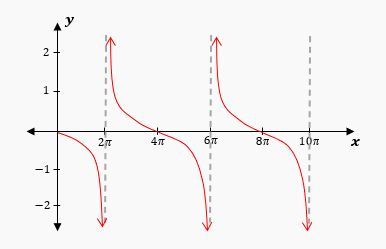
A
b=41
B
b=1
C
b=2
D
b=21
 Verified step by step guidance
Verified step by step guidance1
Identify the period of the cotangent function from the graph. The function y = cot(bx + \frac{\pi}{2}) has vertical asymptotes at x = 2\pi, 6\pi, and 10\pi, indicating a period of 4\pi.
Recall that the period of the cotangent function y = cot(bx + \frac{\pi}{2}) is given by \frac{\pi}{b}.
Set the period \frac{\pi}{b} equal to the observed period from the graph, which is 4\pi.
Solve the equation \frac{\pi}{b} = 4\pi for b. This involves multiplying both sides by b and then dividing by 4\pi.
Conclude that the value of b is \frac{1}{4} after solving the equation.

 5:53m
5:53mWatch next
Master Graph of Sine and Cosine Function with a bite sized video explanation from Nick
Start learningRelated Videos
Related Practice



